|
Fresh Water Year 2003
CLEAN-India’s focus was to encourage individuals, communities, and concerned citizens to protect and respect our water resources. This was done through our Water Watch programme which was conducted in Amreli, Aurangabad, Udaipur, Bangalore, Pondicherry, Madurai, Ranikhet, Indore, Bhopal and Varanasi. Serious attempts were made by the CLEAN team to spread large scale awareness among the students, community, stakeholders and government regarding the threat to our fresh water resources and the urgent need to conserve it. From providing scientific skills to students for testing the quality of drinking water, generating awareness, to suggesting and taking up conservation measures like tap water harvesting and roof top rain water were a part of the CLEAN-India initiative. CLEAN-India programme has been playing a pro-active role in creating awareness about protecting and making our environment better through different activities. The programme initiated by Development Alternatives adopts a three pronged approach by initiating environment quality assessment, following which awareness is generated and action taken for improving the environment. The catalysts of change in the programme are school students and youth who, in turn, motivate the communities. The young champions receive scientific training on monitoring drinking water quality. They are further enthused to initiate various campaigns pertaining to local environmental issues. Most importantly, youngsters in their own capacity initiate projects at the school and household levels to improve the quality of our environment.
Get Quality Conscious -
Drinking Water Quality Assessment
|
|
In Aurangabad during the monitoring process, the CLEAN team discovered the presence of coli form bacteria in a public tap of a park. This was reported in the leading newspaper of Aurangabad. The Municipal Corporation immediately reacted to it and a meeting was organized by the CLEAN team. This meeting was conducted to seek support from the authorities in solving the water quality problem and emphasize the importance of clean water supply to the communities. The authorities ensured complete support in improving the water quality and as a first step the public tap was cleaned up and is being regularly monitored since then. |
Water
Conservation through Tap & Rain Water Harvesting
Efforts were put in to conserve the water in various ways like creating
a green belt. The waste water from houses was collected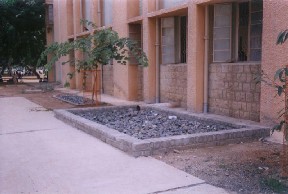 and used for gardening, tap water harvesting, and roof top rain water
harvesting.
and used for gardening, tap water harvesting, and roof top rain water
harvesting.
In Amreli, a new water channel was constructed to harvest the overflow
from tap water. Waste water was channelised for gardening; new taps were
installed to curb leakage; and soak pits were constructed as a solution
to water logging.
Ranikhet being a hilly area, rain water harvesting was
done to store water in that region..
In Indore, the local community was interested in proper disposal of
waste water. The Resident Union developed a green belt in
the area and also made arrangements for recharging the well water.
One of the schools developed a waste water harvesting plant in the
school. In other school, run off from canteen/mess was filtered
and collected in a tank and used for gardening. In one of the
communities, run off from a bore well was collected in a pit and
challelised toa well for recharging the groundwater.
In rest of the cities (Pondicherry,
Aurangabad,
Madurai, and
Varanasi), the common
principle of tap water harvesting was followed. The water
harvesting structure was planned around the main tap of each school.
These taps are used as a source of drinking water and also to wash up
after the meal. Several of these structures had leaking taps and
un-maintained drain pipes. As a result, the used water flowed out into
the municipal drain and also formed stagnating pools near the taps.
Thus, the design of the water harvesting structure included repair of
existing structures to prevent leakages and the formation of a small
garden, to be supplied with filtered water. The garden was set up
with perforated pipes laid underground so as to have a simple drip
irrigation system.
The students were actively involved during the design and construction
of the tap water harvesting structures in each school.
Geographical Information System
(GIS) as a Decision Support System tool
As more and more people are exposed to the contamination of drinking
water, many issues arise that not only involve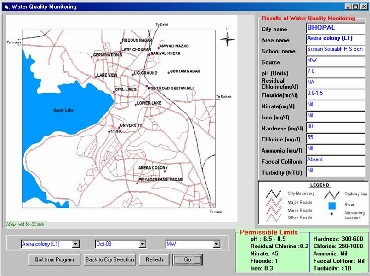 premeditating the contaminated water, but also preventing similar
situations from occurring in future. The drinking water is contaminated
through the pipe distribution system or directly through ground water.
premeditating the contaminated water, but also preventing similar
situations from occurring in future. The drinking water is contaminated
through the pipe distribution system or directly through ground water.
Mapping the water quality parameters using the Decision Support Systems like GIS enables quick decision-making by the policy makers. Graphical representation of data helps in easy analysis. A Spatial Decision Support System (SDSS) is a computer – based system designed to assist in the decision-making process.
The digital spatial database
for the 10 cities was generated using the tourist guide map of each city
by converting analog data into digital data. All the features like
roads, railways, major water bodies, monitoring locations were extracted
from the guide map. These features were then cleaned and built for
topology. The water quality data was then integrated with the
corresponding monitoring locations for analysis and query building. This
will be soon hosted on the CLEAN-India website (www.cleanindia.org).
Conclusion
By conducting various activities, CLEAN-India students have started
taking a keen interest in informing local communities the importance of
fresh water and the immediate need to conserve it. Students are
now confident and truly believe that they are the ones who have to get
involved in protecting the nation’s water resources.
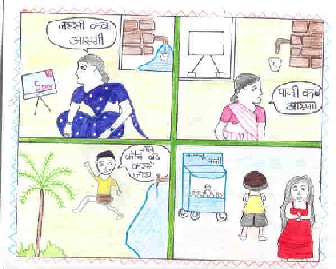 depending on the time of the year, climate, and location.
depending on the time of the year, climate, and location.  If
the bottled drinking water being sold in our country by multinationals
and corporate houses (who have enough resources and
If
the bottled drinking water being sold in our country by multinationals
and corporate houses (who have enough resources and technological backup) are contaminated then one could easily imagine to
what extent the tap water and river water would be contaminated. In
fact, water quality monitoring in Indian water bodies has received very
little attention.
technological backup) are contaminated then one could easily imagine to
what extent the tap water and river water would be contaminated. In
fact, water quality monitoring in Indian water bodies has received very
little attention.  Indore, Central India, water quality of Shipra River was
monitored.
In Amreli, River quality monitoring of
Indore, Central India, water quality of Shipra River was
monitored.
In Amreli, River quality monitoring of 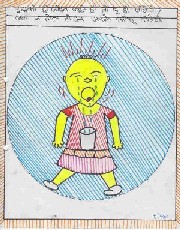
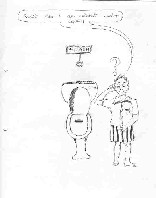 After
the water monitoring was completed, the students embarked upon creating
awareness among the community, not just making them aware about water
quality, but also about simple ways to purify and conserve water.
After
the water monitoring was completed, the students embarked upon creating
awareness among the community, not just making them aware about water
quality, but also about simple ways to purify and conserve water.